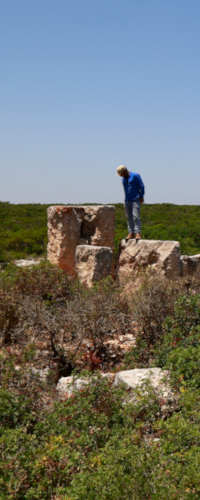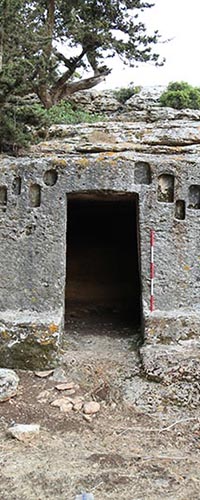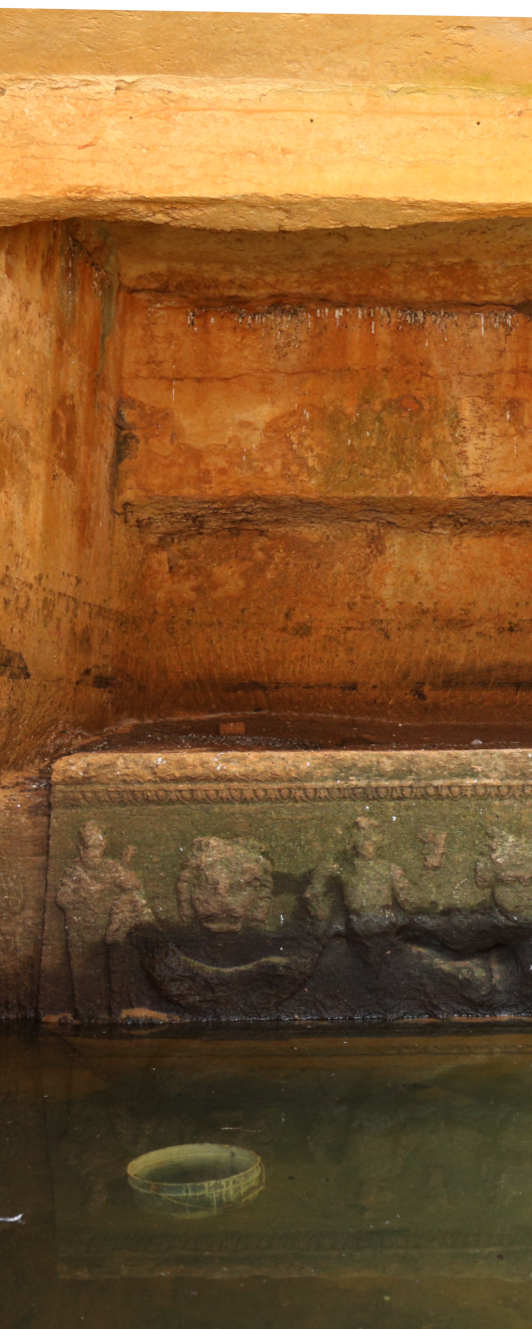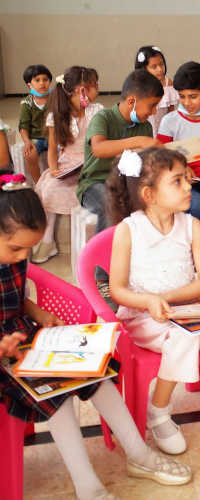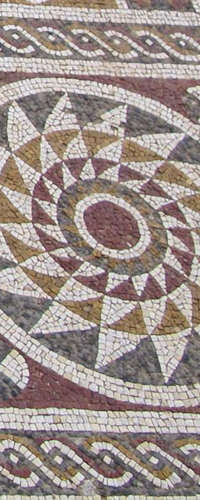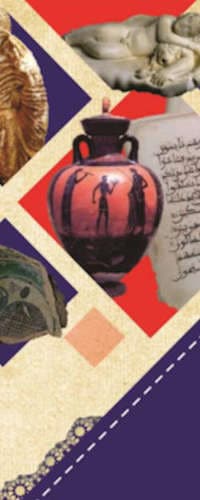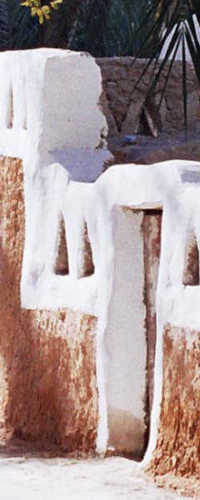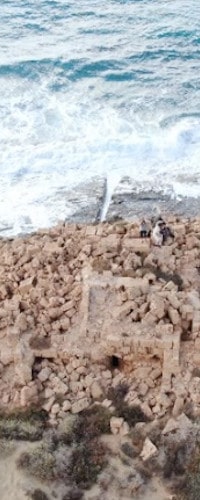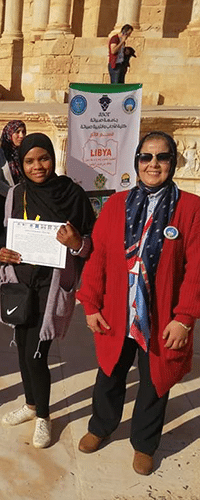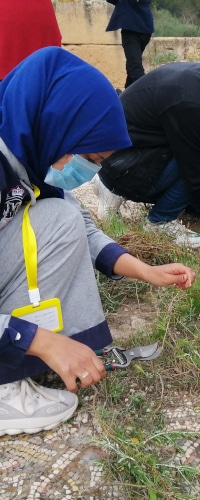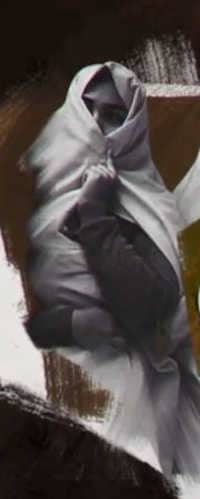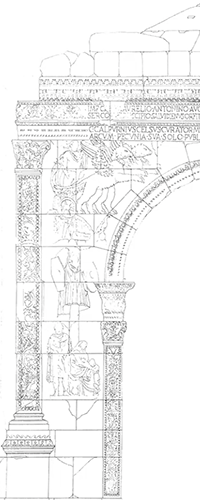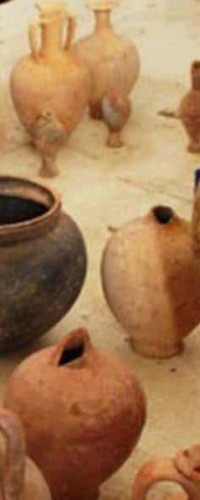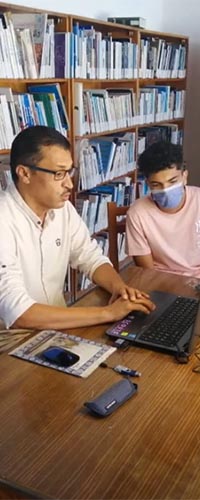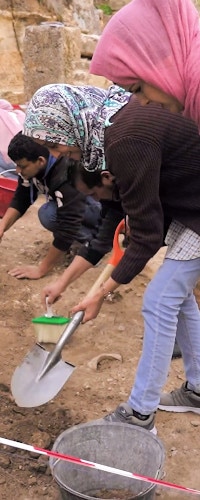

2021 UPDATES
UPDATE: Week 4—Protecting the Cultural Heritage of Cyrene, Libya
During the last week, the condition of 3 main sites located at the area of al-Qubba and Lamluda were evaluated. This week was distinguished by two things: First, Dr. Ahmed Hussein, head of the Department of Antiquities in the East, accompanied us to the site of Ain al-Qubba and met there with some officials from the city and talked with them about the readiness of the DoA to help protect and preserve the site of Ain al-Qubba.
UPDATE: Week 3—Protecting the Cultural Heritage of Cyrene, Libya
During Week 3 of the survey to document and assess threats to the cultural heritage of Cyrene, the team recorded 17 major sites from fortified agricultural settlements to rock-cut chamber tombs, as well as instances of destruction and threats to these sites. The local communities have been extremely helpful in assisting the survey team in documenting these sites.
UPDATE: Week 2—Protecting the Cultural Heritage of Cyrene, Libya
The second week of the Cyrene-al-Qubba risk assessment project was conducted between Saturday, July 3 and Thursday, July 8.
During this period, some 23 main sites and a number of subsites were visited, documented, and assessed, some of which have never been documented previously. We primarily documented agricultural and industrial settlements associated with cemeteries of various kinds. Some sites also contained defensive buildings such as towers as well as fortified farm buildings. The oldest of these sites date back to the Hellenistic period, the later Turkish, and more recent Italian periods.
UPDATE: Protecting cultural heritage around the UNESCO World Heritage site of Cyrene
This project, funded by the US State Department’s Ambassadors Fund for Cultural Preservation has two aims:
- to conduct damage and risk assessment work in an area surrounding the UNESCO World Heritage site of Cyrene with teams composed of Department of Antiquities archaeologists and Tourist Police and Antiquities Protection Authority personnel;
- to conduct heritage awareness workshops and events for the residents of the Cyrenaica with an emphasis on outreach to local youth
UPDATE: Libyan Update from the VAM: Cultural Heritage Partnership in Libya
ASOR Cultural Heritage Initiatives has been active in Libya since 2017, partnering with the Libyan Department of Antiquities, the Historic Cities Authority, the Boy Scouts and Girl Guides, and the Ghadames Manuscripts Association to document and preserve heritage sites as well as engage Libyan volunteers to protect cultural heritage around the country…READ MORE
UPDATE: Commonly Looted Items from Libya Booklet
With support from the U.S. Embassy Libya External Office (LEO), this booklet provides a listing of the ancient Libyan artifacts including the commonly looted items from Libya. It is a tool that can assist law enforcement authorities, such as tourist police and customs, to fight against illicit trafficking of cultural property. This booklet was overseen by Dr. Khlaled El Haddar and represents his work. It includes contributions from Ramadan al-Shaibani and editing from Dr. Ahmad Emrage and Talal
Click here to read the booklet
Click here for the Arabic version (الانطباع الأول عن عمل ميداني لطلاب اَثار في قورينا)
UPDATE from the VAM: Digitizing Manuscripts from the Trans Saharan Trade in Ghadames, Libya
Ghadames is one of the five UNESCO World Heritage sites in Libya. Its mud brick architecture is outstanding, but just as remarkable are the collections that have long been sheltered there. The Ghadames Manuscripts Association has been working to digitize and preserve a repository of manuscripts documenting hundreds of years of the trans Saharan trade stretching from the Libyan coast towards the Niger River valley. These efforts have recently expanded as new techniques of digitization and data management have been adopted in partnership with ASOR and Hill Museum and Manuscript Library.
UPDATE from the VAM: Archaeological Sites in Cyrenaica at Risk
Dr. Ahmad Emrage of the University of Benghazi, discusses threats facing rural sites in the region of Cyrenaica, ranging from agricultural activity to urban encroachment to looting and vandalism. Thanks to the U.S. Embassy Libya External Office (LEO), ten of ASOR’s colleagues from Libya were able to take part in ASOR’s Virtual Annual Meeting.
UPDATE from the VAM: Role of Departments of Archaeology
Mrs. Mofeda Mohammed Kreidigh of Sabratha University, discusses the role of university archaeology departments in protecting cultural heritage. The paper showcases teaching strategies both within and outside of the classroom, and details the current activities of university archaeology departments. Thanks to the U.S. Embassy Libya External Office (LEO), ten of ASOR’s colleagues from Libya were able to take part in ASOR’s Virtual Annual Meeting.
UPDATE from the VAM: Encouraging Volunteer Participation
Thanks to the U.S. Embassy Libya External Office (LEO), ten of ASOR’s colleagues from Libya were able to take part in ASOR’s Virtual Annual Meeting. Mr. Talal Bariun of ASOR presented the paper “Encouraging Volunteer Participation in Cultural Heritage Protection,” which discusses efforts to encourage volunteerism during weekend cultural heritage “pop-up” events.
UPDATE CHI Video: What is Heritage And Why is it Important?
This short, educational video (only 72 seconds) was produced by ASOR’s Libyan heritage partners as part of an effort to create online content in Arabic that is especially useful during the ongoing COVID-19 global pandemic. The video explains why heritage preservation is important for Libya today, and into the future. It is part of ASOR’s efforts to partner with Libyan colleagues to raise awareness about cultural heritage, and thus support the bilateral cultural property agreement between Libya and the United States.
Click here to watch a What is Heritage and Why is it Important? (Arabic, with English subtitles)
Click here for the Arabic version (الانطباع الأول عن عمل ميداني لطلاب اَثار في قورينا)
UPDATE from the VAM: Authentic Orchestrations & Orchestrated Authenticity
Thanks to the U.S. Embassy Libya External Office (LEO), ten of ASOR’s colleagues from Libya were able to take part in ASOR’s Virtual Annual Meeting. Reem Furjani of SCENE presented the paper “Authentic Orchestrations and Orchestrating Authenticity.” Furjani’s paper looks at the changing use of space and the creation of heritage during the restoration of the Arch of Marcus Aurelius in Tripoli.
UPDATE: The State of Illicit Trade and Looting Of Libyan Antiquities: 2011–2020
Encouraged by the U.S. Embassy to Libya External Office (LEO), ASOR embarked on this report in order to provide a record of materials documented as stolen since the outbreak of the Revolution in 2011. The goal is (1) to identify patterns in the illicit excavation and antiquities trade that continue despite the efforts of local authorities, and (2) to identify ways in which additional efforts and resources (by both Libyan authorities and by international partners) might prevent and counter this trade.
Click here for the Arabic version (الانطباع الأول عن عمل ميداني لطلاب اَثار في قورينا)
UPDATE: VAM20 Presentations About Libyan Archaeology & Cultural Heritage
With support from the U.S. Embassy Libya External Office (LEO), ten of ASOR’s Libyan colleagues took part in the 2020 Virtual Annual Meeting in November. The meeting provided a forum for people from 39 countries spanning six continents to hear about the work of our Libyan colleagues and exchange ideas on best practices in cultural heritage stewardship.
UPDATE: First Impressions from a Field School in Cyrene
With support from the Aliph Foundation and the U.S. Embassy to Libya, External Office (LEO), ASOR is partnering with Libyan colleagues to produce videos in Arabic showing the value of archaeology and highlighting Libya’s rich cultural heritage. This video presents aerial views of the World Heritage Site of Cyrene and the excavations sponsored by the University of Mohammed bin Ali al-Sanusi of El-Baida. In addition, the video foregrounds the training of women as archaeologists through recording their impressions of their first experiences with real archaeological fieldwork.
Click here to watch the video (in Arabic; English version coming in February 2021)
Click here for the Arabic version (الانطباع الأول عن عمل ميداني لطلاب اَثار في قورينا)
